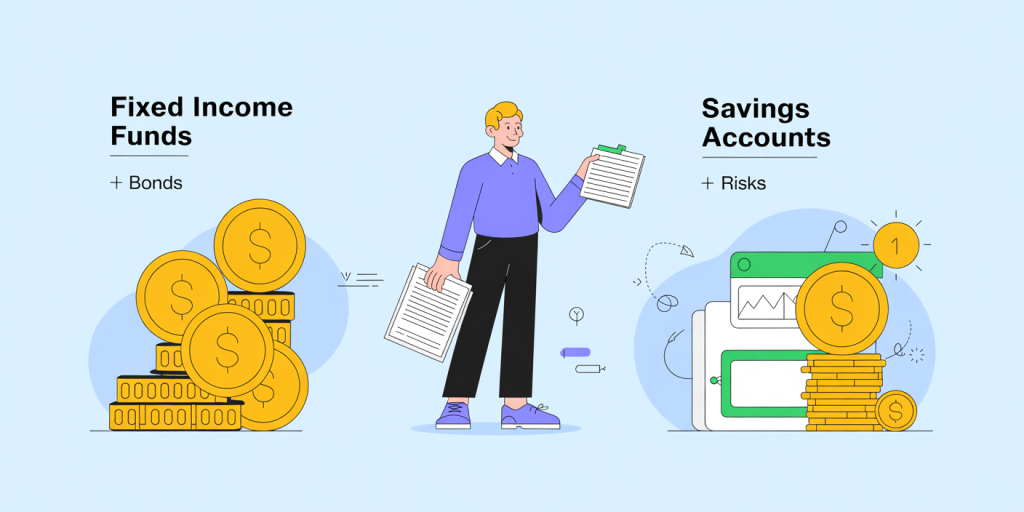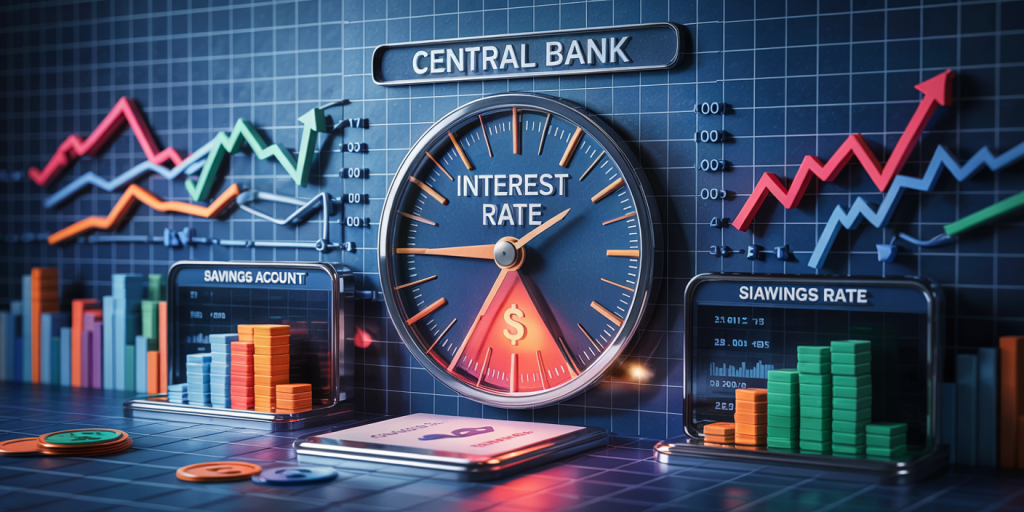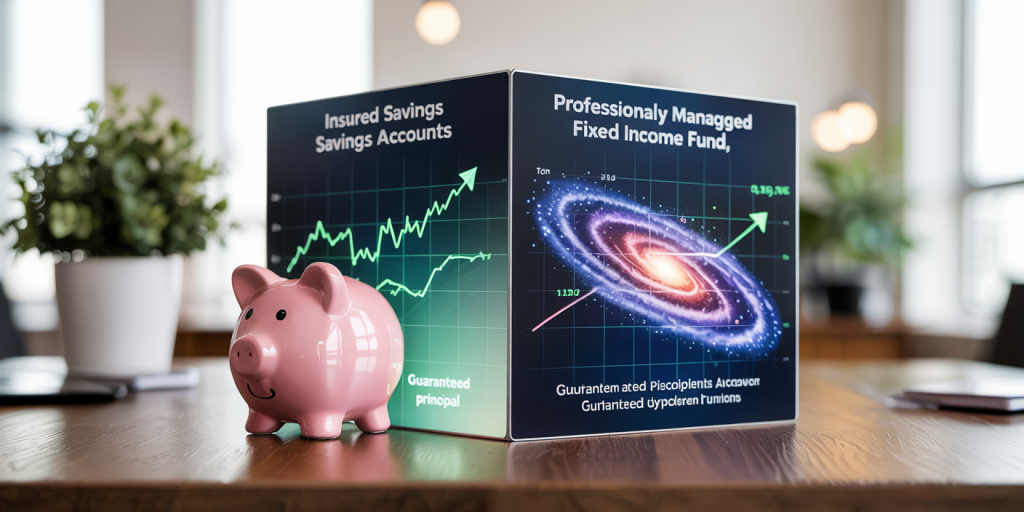Fixed Income Funds: When They Are Better Than Savings Accounts
In today’s dynamic financial landscape, investors continually seek safe yet profitable avenues to grow their wealth. While savings accounts have long been favored for their simplicity and low risk, fixed income funds have emerged as an attractive alternative for individuals aiming to earn higher returns without exposing themselves to excessive volatility. Understanding when fixed income funds outperform savings accounts is essential to making informed investment decisions.

Savings accounts provide liquidity and security but often struggle to keep pace with inflation. Fixed income funds, on the other hand, pool money to invest in debt instruments, offering potential for greater yields along with diversification benefits. This article explores key differences, advantages, and scenarios where fixed income funds may become a better choice than traditional savings accounts.
Understanding Fixed Income Funds vs. Savings Accounts
Fixed income funds primarily invest in government bonds, corporate bonds, and other debt securities that generate regular interest payments. They can be actively or passively managed, adapting to market conditions to optimize returns. Savings accounts are deposit accounts held at banks, offering fixed, often low-interest rates and guaranteed principal backed by banking institutions.
An essential difference lies in risk and return profiles. Savings accounts typically offer an annual interest rate ranging between 0.01% to 0.50% in most countries, heavily influenced by central bank rates. Conversely, fixed income funds can generate returns averaging from 3% to 6%, depending on fund type and prevailing interest rates. However, fixed income funds may expose investors to interest rate risk and credit risk, as bond prices fluctuate with changes in market interest rates and borrower creditworthiness.

Consider a practical example: if an individual keeps $10,000 in a savings account with an interest rate of 0.3% annually, they would earn $30 in one year. Conversely, investing the same amount in a fixed income fund yielding 4% could potentially earn $400, significantly outpacing the savings account. However, with the fixed income fund, the value of the investment can fluctuate day-to-day, unlike the guaranteed stability of a savings account.
Interest Rate Environment and Its Impact
The prevailing interest rate environment is a significant factor affecting the attractiveness of fixed income funds versus savings accounts. Central banks set benchmark interest rates that influence both savings deposit rates and bond yields, albeit with some time lag and market variations.
During periods of low interest rates, savings account yields tend to stagnate near zero. For example, after the 2008 financial crisis and during the recent COVID-19 pandemic, central banks around the world reduced interest rates to historic lows. Consequently, savings account rates also dropped, sometimes near 0%. Fixed income funds, especially those investing in longer-term or higher-yield bonds, presented an opportunity to capture better returns. For instance, U.S. investment-grade bond funds averaged annual returns of approximately 5% during 2020, notably surpassing savings account yields.

Conversely, in a rising interest rate environment, bond prices tend to fall due to inverse relationship with yields, resulting in lower fixed income fund returns. However, savings accounts may respond faster, raising their interest rates to reflect central bank hikes, sometimes making them temporarily more attractive. For example, in 2022 when the U.S. Federal Reserve increased rates aggressively, prime savings account rates climbed from sub-0.10% to over 3%. Still, many fixed income funds adjusted holdings, rotating into higher-yield bonds, maintaining competitive returns.
Risk Considerations: Stability vs. Potential Volatility
Risk tolerance plays a pivotal role in selecting between fixed income funds and savings accounts. Savings accounts are insured (e.g., FDIC insurance in the U.S. up to $250,000), making them virtually risk-free regarding principal loss. They are ideal for emergency funds or short-term liquidity needs.
Fixed income funds, while generally safer than stocks or equity funds, carry interest rate risk, credit risk, and liquidity risk. Interest rate risk arises because bonds lose value when interest rates rise. Credit risk involves potential default by bond issuers. Liquidity risk may surface in distressed markets when investors find it harder to sell bond holdings without losses.
For example, in March 2020, during the peak COVID-19 market turmoil, some corporate bond funds experienced significant temporary price drops due to credit concerns and liquidity shortages. An investor heavily reliant on these funds faced potential losses, unlike savings accounts.
Despite these risks, fixed income funds provide diversification by holding dozens or hundreds of bonds, reducing the impact of any single default. Moreover, funds are managed by professionals who can adjust portfolios dynamically to mitigate risks.
Comparative Table: Risk and Return Characteristics
| Aspect | Savings Account | Fixed Income Fund |
|---|---|---|
| Risk Level | Very low (insured) | Moderate |
| Liquidity | High (instant access) | Moderate (fund-specific) |
| Return Range (annual) | 0.01% – 0.5% | 2% – 6% (varies) |
| Inflation Protection | Low | Moderate (depends on fund) |
| Principal Guarantee | Yes | No |
| Management | None | Professional management |
Tax Efficiency and Fees
Another essential consideration is the tax implications and fees associated with each investment vehicle. Savings account interest is generally taxed as ordinary income, which can reduce net returns, especially for investors in higher tax brackets.
Fixed income funds also distribute income subject to taxation. However, certain bond funds investing in municipal bonds may offer tax-exempt interest, improving after-tax yields. For example, municipal bond funds in the United States often provide income exempt from federal income tax, and if invested in local bonds, state tax exemption also applies.
Fees are an unavoidable cost in fixed income funds. Expense ratios can range from 0.1% for passive index bond funds to over 1% for actively managed portfolios. While fees reduce net returns, many investors find the potential higher yields outweigh the costs, particularly when compared to near-zero savings account rates.
To illustrate, if a fixed income fund yields 4% gross but charges a 0.5% expense ratio, the net yield is 3.5%, still significantly higher than a 0.3% savings account. Conversely, savings accounts typically do not charge fees but have minimal returns.
Practical Scenarios Where Fixed Income Funds Excel
Fixed income funds particularly shine in several practical investor scenarios:
1. Longer-Term Savings Goals: For goals with horizons of 3-5 years or more, fixed income funds can offer a better balance of growth and safety compared to savings accounts. For example, an individual saving for a home down payment in five years may prefer a high-quality bond fund that provides inflation-beating returns without the volatility of stocks.
2. Inflation Mitigation: Savings accounts often lose purchasing power during inflationary periods. Fixed income funds investing in inflation-protected securities (such as TIPS in the U.S.) provide income that adjusts with inflation, preserving real returns.
3. Diversification in Portfolio: Fixed income funds serve as a critical portfolio diversification tool, balancing a mix of equities and cash with predictable income and reduced volatility.
4. Higher Income Needs: Retirees seeking steady income streams may opt for bond funds distributing monthly income, providing better yields than savings accounts or money market funds.
Consider John, a 40-year-old professional planning retirement in 15 years. He puts aside $10,000 annually. By investing in a fixed income fund averaging 4% return annually, his wealth grows more robustly compared to stashing it in savings accounts earning 0.3%. Over 15 years, compounding effects lead to a substantial difference in final accumulation.
Comparing Historical Performance: Savings Accounts vs. Fixed Income Funds
Examining historical data reveals the growth potential disparities. According to Morningstar, between 2010 and 2020, the average U.S. 10-year Treasury bond fund returned approximately 4.2% annually, while average savings account interest rates hovered below 0.5% for much of that period.
Table: Hypothetical Growth of $10,000 Over 10 Years (Assuming steady rates)
| Investment Type | Annual Return | Value After 10 Years |
|---|---|---|
| Savings Account | 0.3% | $10,304 |
| Fixed Income Fund | 4.2% | $15,166 |
This example shows fixed income funds generating about 47% higher terminal value than saving accounts over a decade. Inflation averaged around 2% annually during this period, indicating savings accounts eroded purchasing power while bond funds outpaced it.
Looking Ahead: Future Trends in Fixed Income and Savings Products
With central banks worldwide adopting various monetary policies, the future landscape for fixed income funds and savings accounts will evolve. Rising inflation trends and potential further rate hikes may pressure bond prices but improve yields for new bond issuances, benefiting fixed income funds over time.
Moreover, innovations in financial products, such as “high-yield savings accounts” offered by fintech firms tied to money market conditions, may blur lines. However, traditional savings accounts will likely remain low-yield options prioritizing safety and liquidity.
Investors embracing technology-enabled fixed income funds, including ETFs tracking diverse bond sectors, enjoy greater transparency, lower fees, and liquidity compared to older mutual funds. These advances enhance fixed income funds’ appeal, particularly for retail investors previously deterred by complexity.
Sustainability factors are increasingly influencing fixed income investments as well, with green bonds and social bonds growing in popularity, enabling investors to generate income while supporting environmental and social initiatives.
In summary, as market conditions and investor preferences shift, fixed income funds are poised to offer more attractive alternatives to savings accounts, especially for those seeking better returns, moderate risk, and long-term capital preservation.
